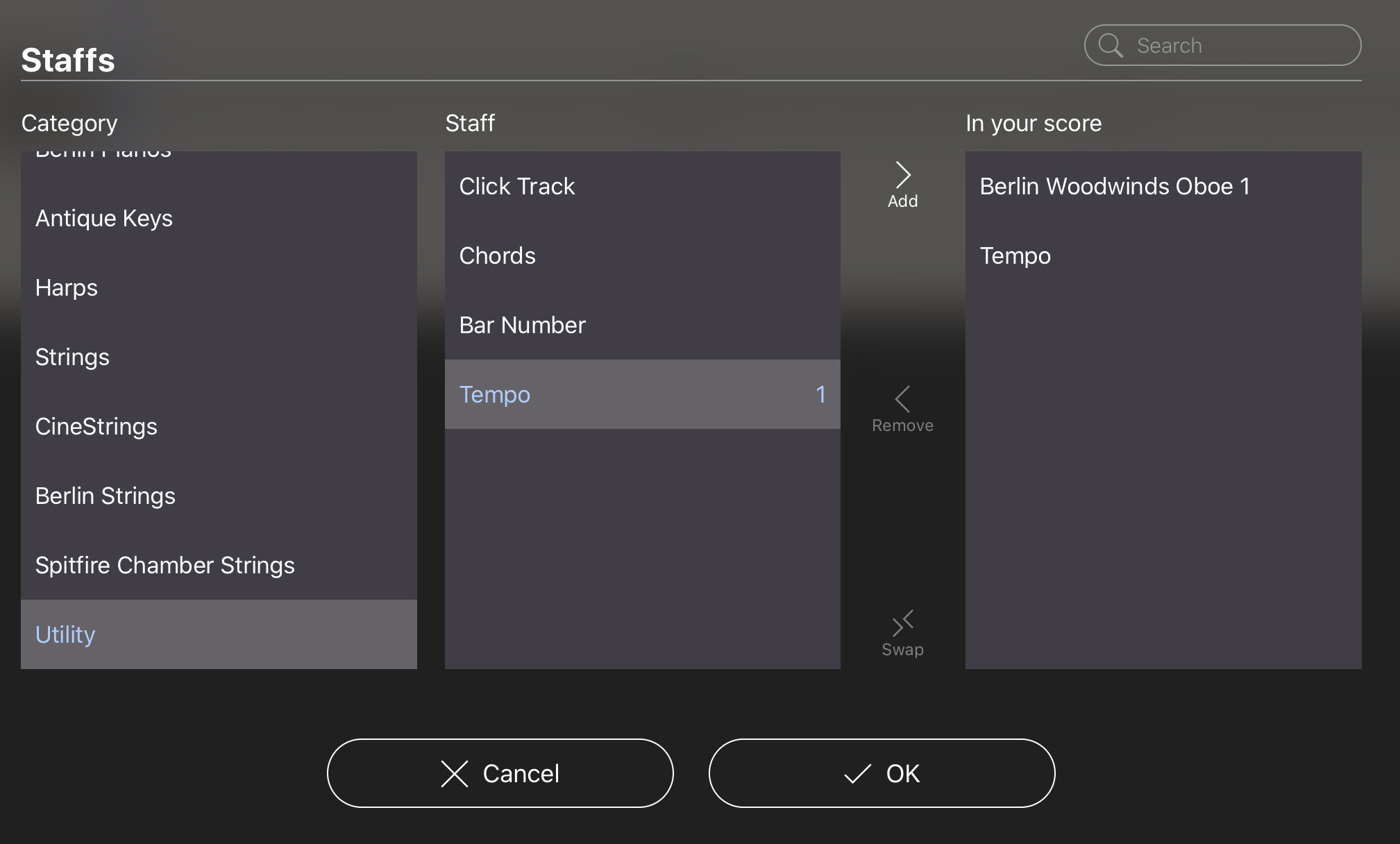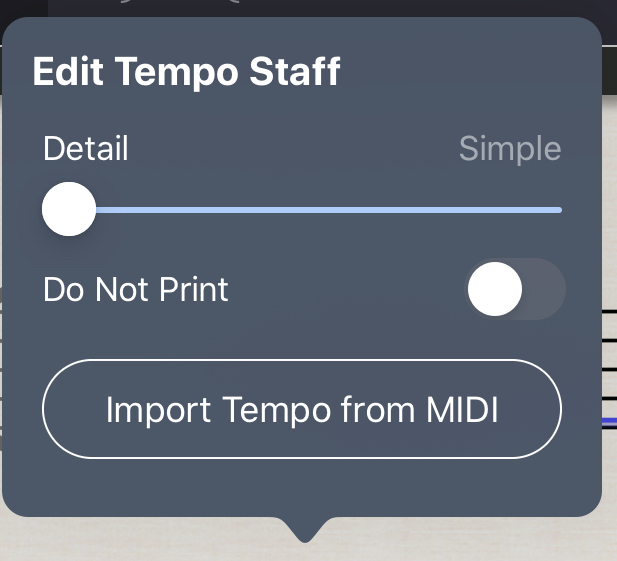Tempo as text
Adding tempos in StaffPad couldn't be simpler: Choose Insert Text and type a number. Or, you can start typing a tempo direction, like Andante or Presto. StaffPad will realise you're inserting a tempo and automatically format the tempo and set the value internally.
Also, once you start typing, StaffPad will offer suggestions of commonly used tempo indications; once you see the one you like, select it to place it in the score.


You can also ask Fenby to set the tempo. Say: "Tempo is one hundred and thirty two bpm".
The Tempo Staff
The Tempo Staff is a hugely powerful feature of StaffPad. You can add a tempo staff to your score from the Utility staffs category.

The tempo staff has some unique properties. It'll display the score tempo as a graph when you activate the automation layer.
Whilst in the automation layer view, you can add new nodes or "points" to the tempo staff with your pen. You can drag each point up or down to change the value, or left and right to change the position. You can also grab the blue dot in the corner of a tempo node change, and use this to create a smooth tempo ramp from one point to the next.
Once added to the score, the Tempo Staff becomes the main place that tempos are displayed in your score. Therefore, it'll 'consume' any tempo markings you've already written at the top of the score, and instead display them on the tempo staff. You can place the tempo staff anywhere within the score order.
Using the tempo staff, you can create very fine and precise tempo maps that add a lot of humanity and expression to the playback.

However, you often wouldn't want all these markings to be rendered as metronome markings in your score. It would be overwhelming for the musicians (and yourself) to read this many markings; especially as they're often quite close together in actual metronomic value.
To solve this problem, when you exit the automation view, StaffPad renders the metronome markings based on a "detail" setting. To change this setting, tap the Tempo Staff's name at the start of the score or in the ghost staff. This will show the Edit Staff control, which looks a little different for Tempo Staffs...

From here, you can set the Detail slider to choose how much information you want to be displayed don the score. You can even set the tempos to not print at all, if you don't want to see them, using the Do Not Print toggle.
On the Simple setting, StaffPad interprets the tempo graph and displays just the most radical changes. The rest are displayed with an approximation mark ~ which makes it clear that the real tempo might be a little different to this value.
As you increase the detail, you'll see StaffPad's interpretation change, until it finally just tries to display every single tempo point as a metronome marking.
Importing Tempos from MIDI
When working to picture, there's often very precise tempo maps your piece must follow. If you have a MIDI file that has precise tempo information, you can import this at any time, directly into StaffPad. Tap "Import Tempo from MIDI" and choose your .mid or .midi file. StaffPad will import this MIDI file from the beginning, so make sure there aren't any additional bars before you want the map to start.